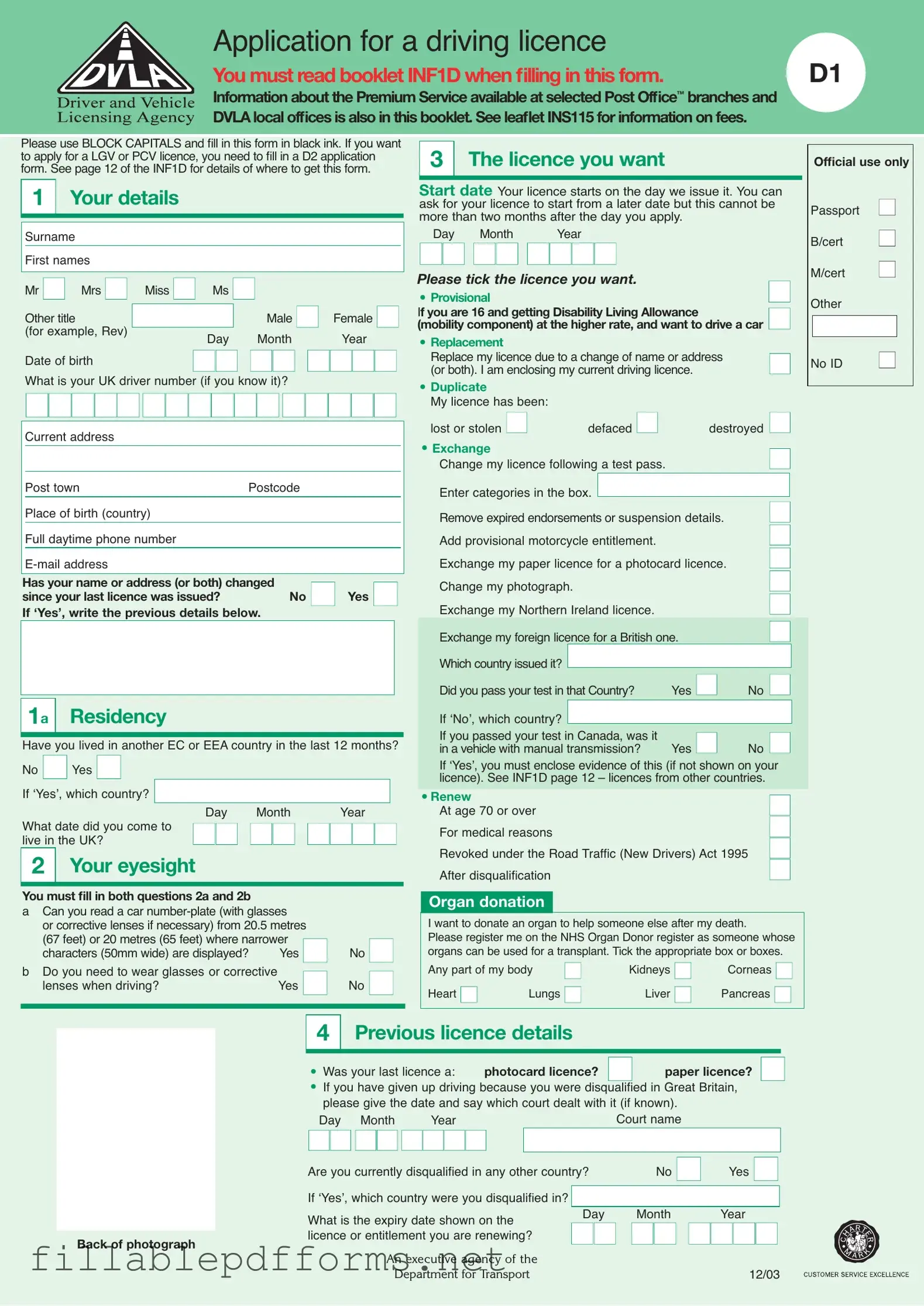The D1 DVLA form serves as a crucial document for individuals seeking to apply for, renew, or exchange their driving licenses in the UK. It encompasses a variety of essential sections, each designed to gather specific information about the applicant. From personal details like your name, address, and date of birth to questions about your eyesight and health, the form ensures that all necessary information is collected to assess your eligibility for driving. Additionally, it includes options for various types of licenses, whether you’re applying for a provisional license, a replacement for a lost one, or an exchange of a foreign license. Importantly, the form also addresses medical conditions that may impact your ability to drive, requiring you to disclose any relevant health issues. Furthermore, applicants must provide proof of identity and, in some cases, have someone reliable sign the back of their photograph. As you navigate through the D1 form, it’s vital to refer to the accompanying booklet, INF1D, which outlines the application process and the fees involved. Completing this form accurately and thoroughly is essential, as any discrepancies could lead to delays or rejections of your application.
